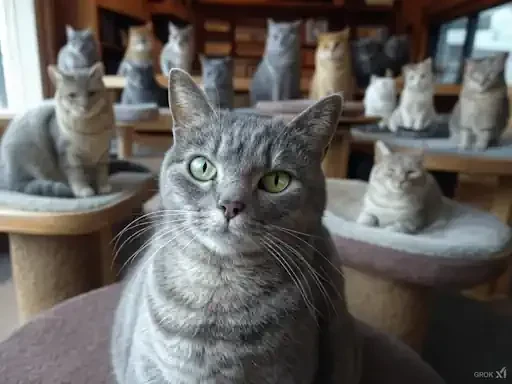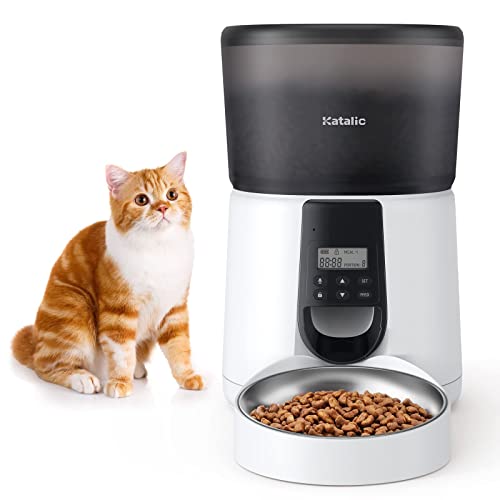Why nine lives? The question itself hangs in the air, imbued with a sense of ancient mystery and feline mystique. Where did this persistent and utterly charming myth about cats and their seemingly supernatural resilience originate? How did the idea that our feline companions possess not just one, but a bountiful nine lives, become so deeply ingrained in our collective consciousness? Let's embark on a journey to unravel the fascinating story behind the feline “nine lives” myth, a tale as captivating and enigmatic as the creatures it celebrates.
From beloved cartoon characters bouncing back unscathed from improbable cartoon calamities, to hushed whispers in folklore about cats escaping danger time and time again, the notion of cats having nine lives is woven into the very fabric of our culture. It's a concept so pervasive that it feels almost intuitive, a playful explanation for the seemingly uncanny ability of cats to survive falls, dodge traffic, and emerge from perilous situations with an air of nonchalant grace. But is there any flicker of truth behind this enduring myth, or is it purely a whimsical creation, a product of human imagination projected onto our mysterious feline friends? While science firmly debunks the literal interpretation – cats, alas, are mortal just like any other creature – the myth itself holds a rich and revealing history, a tapestry woven from threads of cultural reverence, keen observation, and a dash of symbolic mystique.
This exploration will delve into the multifaceted origins and enduring allure of the “nine lives” myth. We will journey back through millennia, tracing its roots in ancient cultures and exploring its evolution through mythology and folklore. We will examine the very real observational basis for the myth, unpacking the scientific marvel of feline agility and their remarkable ability to seemingly cheat death. We will delve into the symbolism of the number “nine,” unraveling its mystical and cultural significance and considering its potential connection to the myth’s persistence. And finally, we will contemplate the enduring purr-suasion of this charming notion, understanding why, even today, the myth of cats’ nine lives continues to resonate, delight, and shape our perception of these enigmatic creatures.
To truly understand the myth of cats' nine lives, we must journey back through time, exploring the rich cultural and historical tapestry that has woven this enduring belief. The threads of this myth are ancient, deeply rooted in human history and interwoven with our evolving relationship with felines. Ancient Egypt, the cradle of civilization and a land steeped in mystery and reverence for the natural world, provides a compelling starting point. In ancient Egyptian society, cats were not merely pets; they were revered beings, elevated to a status bordering on the divine. Bastet, the goddess of protection, fertility, motherhood, and domesticity, was often depicted with the head of a cat, or sometimes fully as a feline. This association with a powerful and benevolent deity imbued cats with a sacred aura, linking them to concepts of protection, good fortune, and the very fabric of life itself.
This divine association extended beyond mere earthly reverence. Ancient Egyptians believed in a rich and complex afterlife, and cats, linked to deities associated with the sun, moon, and the cyclical rhythms of nature, were naturally connected to ideas of rebirth and renewal. The sun, rising each day after its nightly journey through the underworld, and the moon, waxing and waning in a continuous cycle of disappearance and reappearance, were potent symbols of cyclical life, death, and rebirth. Cats, with their nocturnal habits, their enigmatic eyes that seemed to glow in the dark, and their association with lunar deities like Bastet (whose iconography also sometimes linked her to the moon), were easily incorporated into this symbolic framework. This connection might have hinted at a belief in a form of feline cyclical existence, a sense of existing beyond a single earthly life, perhaps even a metaphorical hint at multiple lives or a form of feline resurrection in the afterlife. The elaborate practice of mummification in ancient Egypt, extended not only to humans but also to animals, including cats, further reinforces this idea of their profound spiritual significance. The mummification of cats alongside their human companions suggests a belief in their importance even in the afterlife, potentially extending their existence beyond the confines of a single mortal span, perhaps even hinting at a continuous feline presence across different realms of existence.
As we move beyond ancient Egypt, the threads of the nine lives myth continue to weave through mythology and folklore across diverse cultures, albeit with fascinating variations. While the number "nine" is most prevalent in English-speaking cultures, it's important to acknowledge that the specific number associated with feline resilience isn't universally fixed. In some Spanish-influenced traditions, for instance, the number seven is sometimes cited as the magical number of lives attributed to cats. This variation highlights a crucial point: while the precise number may differ, the core concept of multiple lives, or an unusual degree of resilience and survivability, is a remarkably widespread theme across cultures, suggesting a common human perception of cats as possessing an extraordinary capacity to cheat death, regardless of the specific number attached to this belief.
In medieval Europe, a different, and often darker, perspective on cats emerged, intertwining with folklore and superstitions surrounding witchcraft and the supernatural. While cats were still sometimes associated with good luck, particularly black cats in some regions, a more ambivalent, even fearful, view also took hold, particularly in relation to black cats and witchcraft. Cats, with their nocturnal habits, independent nature, and enigmatic gaze, became linked in popular imagination to witches, magic, and the shadowy realms of the supernatural. This association, while different in tone from the reverence of ancient Egypt, ironically, might also have contributed to the "nine lives" myth, albeit from a darker, more mysterious angle. If cats were perceived as being connected to supernatural forces, perhaps they were also believed to possess supernatural resilience, a capacity to evade death that ordinary creatures lacked, further fueling the notion of multiple lives or a charmed existence beyond the mortal coil. Beyond direct mythological or religious contexts, folklore traditions around the world are replete with folktales, proverbs, and traditional sayings that subtly, or sometimes explicitly, reference cats' remarkable resilience, agility, or their seeming ability to escape death in precarious situations. These snippets of народная мудрость (народная мудрость, folk wisdom) act as cultural echoes, subtly reinforcing the idea of feline exceptionalism and hinting at the underlying belief in their almost supernatural ability to survive, laying the groundwork for the more explicit myth of nine lives to take root and flourish.
Beyond cultural narratives and historical threads, the myth of cats' nine lives undoubtedly draws inspiration from a very real observational basis – the remarkable physical capabilities and perceived resilience that cats genuinely possess. Born survivors, felines exhibit a combination of agility, reflexes, and an almost uncanny ability to escape seemingly perilous situations, fueling the perception that they are indeed somehow more durable than ordinary creatures. Feline agility is legendary, and at the heart of this agility lies the remarkable righting reflex. This innate biological mechanism allows cats to twist their bodies in mid-air during a fall, orient themselves, and almost invariably land feet-first. This ability, a marvel of biomechanics and feline anatomy, minimizes the impact of falls, distributing force across their limbs and spine, and significantly reducing the risk of serious injury from heights that might be fatal to other animals. The “always land on their feet” phenomenon is not just an old wives’ tale; it's a scientifically demonstrable reality, a testament to feline evolutionary adaptation that undoubtedly contributes to their perceived survivability and the myth of multiple lives.
Exceptional balance and coordination further enhance feline agility and their ability to navigate precarious situations. Cats possess an extraordinary sense of balance, thanks to their highly developed vestibular system and flexible spines. This allows them to walk along narrow ledges, leap across gaps with seemingly effortless grace, and navigate complex and unstable environments with remarkable confidence and sure-footedness. Their coordination is equally impressive, enabling them to react with lightning-fast speed, adjust their movements mid-air, and execute complex acrobatic maneuvers that allow them to escape dangers and navigate tight spaces that would be inaccessible, or perilous, to other creatures. Adding to this impressive physical toolkit are cats’ lightning-fast reflexes and exceptional escape abilities. Their reaction time is incredibly rapid, allowing them to dart away from perceived threats, dodge projectiles, and escape from tight spots with astonishing speed and agility. This quickness, combined with their keen senses and innate alertness, contributes significantly to their perceived survivability, making it seem as though they possess an almost preternatural ability to evade danger and cheat death.
Beyond their impressive athleticism, the myth of nine lives might also be fueled by the perceived resilience of cats to injury, often based on anecdotal observations. Many cat owners have witnessed their feline companions seemingly “shake off” falls from significant heights or quickly recover from accidents that would appear to be potentially serious. While cats are certainly not invulnerable, their ability to sometimes bounce back quickly from seemingly harrowing incidents undoubtedly contributes to the perception of extraordinary resilience and the idea that they possess an almost superhuman capacity to survive. Adding to this perception is the inherent discreetness of pain and illness in cats. Cats are masters of disguise when it comes to discomfort or sickness. This is an evolutionary survival instinct – in the wild, showing weakness can make them vulnerable to predators. This natural tendency to hide pain and illness might lead humans to underestimate the severity of feline injuries or perceive them as inherently more resilient than they actually are. A cat that appears to quickly recover from a fall might be masking underlying pain or internal injuries, reinforcing the myth of their invulnerability in the eyes of casual observers. Finally, cats are undeniably adaptable and resourceful creatures. Their inherent adaptability allows them to thrive in a wide range of environments, from bustling urban landscapes to rural settings, and their resourcefulness enables them to find food, shelter, and navigate challenging situations. This adaptability and resilience in the face of hardship, combined with their physical prowess, undoubtedly contribute to the overall perception of cats as exceptionally hardy survivors, further fueling the enduring myth of their nine lives.
The enduring myth of cats’ nine lives is not just about feline agility or cultural narratives; it’s also intricately linked to the mystique of the number “nine” itself. Exploring the symbolic significance of this particular digit across cultures and belief systems offers another layer of understanding to the myth’s persistent appeal. The number “nine” holds a unique position in number symbolism across various cultures, often imbued with a sense of mystical or profound significance. It frequently appears in mythology, religion, folklore, and philosophical traditions, often associated with concepts of completion, cycles, mystery, or something considered especially powerful or significant. In many cultures, "nine" is seen as a number of completion or attainment. It is the last single-digit number before reaching ten, considered the beginning of a new cycle. This sense of completion and cyclical renewal resonates with the ancient Egyptian associations of cats with rebirth and cyclical existence, hinting at a potential connection between the number and the feline mythos.
Examples from diverse mythological, religious, and folklore traditions further illustrate the symbolic weight of "nine." In Norse mythology, for example, Odin, the chief god, hung for nine days and nights on Yggdrasil, the World Tree, to gain wisdom. This act of sacrifice and endurance is intrinsically linked to the number nine, imbuing it with connotations of profound knowledge and resilience. In Greek mythology, the Muses, goddesses of inspiration and the arts, were often depicted as nine in number, suggesting a connection between "nine" and creative power, inspiration, and perhaps even a form of divine influence. Across various folk belief systems, "nine" often appears in rituals, spells, and charms, suggesting its association with magic, mystery, and the supernatural – themes that often intertwine with the perception of cats as enigmatic and somewhat magical creatures. While perhaps more speculative, it's intriguing to consider whether the number "nine" might also have been linked to observed natural cycles in the world around them. Some speculate that the number could be loosely associated with the lunar cycle (approximately four nine-day periods in a lunar month) or the gestation period of cats (roughly nine weeks). While these connections are less direct and more interpretive, they hint at the possibility that "nine" might have held a deeper, perhaps subconsciously perceived, resonance with natural rhythms and cyclical processes, potentially further linking it to the feline mythos, especially considering cats’ historical association with lunar deities.
Beyond any literal or cyclical interpretations, it's crucial to consider the possibility that "nine" in "nine lives" is not meant to be taken strictly numerically, but rather symbolically, as a general term for multiplicity or abundance. In many languages and cultures, numbers are not always used with precise mathematical intent, but rather as symbolic representations of broader concepts. "Nine," in this context, could simply be a way to express "many," "numerous," or "abundant" lives or chances, rather than a literal claim that cats possess exactly nine lives and no more. Folklore and myths often employ exaggeration and hyperbole as literary devices to emphasize a point, create a memorable image, or add to the fantastical element of the narrative. "Nine lives," in this light, might be seen as a particularly impactful and easily remembered way to convey the idea that cats are incredibly resilient, possessing an almost limitless capacity to survive, recover, and bounce back from adversity, rather than a precise numerical claim.
Even in our modern, scientifically-minded world, the myth of cats’ nine lives endures, retaining its charm and a surprising degree of cultural currency. Why does this ancient myth continue to resonate so strongly today, despite our understanding of feline biology and mortality? Part of the enduring appeal lies in the myth’s inherently charming and endearing nature. The idea of feline resilience is inherently comforting to cat lovers. The thought that their beloved pet is exceptionally robust, possessing an almost magical ability to withstand harm, offers a reassuring sense of security and perhaps even a touch of vicarious feline invincibility. The myth also undeniably adds to the feline mystique and allure. Cats are already perceived as enigmatic, independent, and somewhat mysterious creatures. The “nine lives” myth amplifies this mystique, enhancing their reputation as beings somehow set apart, possessing qualities that transcend the ordinary, and capable of feats that defy typical expectations. And let's not forget the simple playfulness and lightheartedness embedded in the myth. The concept of nine lives is inherently whimsical and fun. It’s often invoked in a lighthearted way, adding to the playful and often humorous nature of cat ownership, becoming a shared joke, a fond exaggeration, and a cultural shorthand for feline resilience in everyday conversation.
Beyond its inherent charm, the “nine lives” concept has transcended its literal interpretation and taken on metaphorical resonance in modern culture. Today, “nine lives” is often used as a powerful metaphor for general resilience, adaptability, and the ability to bounce back from adversity, not just in relation to cats, but in human experience as well. We speak of individuals who “used up one of their nine lives” after narrowly escaping danger, or describe someone as having “nine lives” if they overcome repeated setbacks and challenges, demonstrating the myth’s broader metaphorical application beyond the feline realm. Pop culture further reinforces the myth’s enduring presence. References to cats’ nine lives abound in modern pop culture, from cartoons and animated films to literature, television shows, and everyday language. These constant cultural reiterations, often playful and lighthearted, continually reinforce the myth's presence in our collective consciousness, ensuring its continued relevance and familiarity across generations, even for those who may not consciously believe in its literal truth.
Ultimately, the enduring power of the “nine lives” myth lies in the inherent power of story and folklore itself. Myths often arise as attempts to explain phenomena that were perplexing or not easily understood in earlier times. The seemingly inexplicable resilience of cats, their ability to survive falls and escape dangers that might prove fatal to other creatures, likely prompted early humans to seek explanations beyond simple biology, leading to the creation and perpetuation of mythical narratives. The myth taps into our enduring human fascination with animals and their unique qualities. Humans have always been captivated by the animal kingdom, drawn to their diverse abilities, behaviours, and often, seemingly magical qualities. The “nine lives” myth is a testament to this enduring fascination, a way of mythologizing a creature we admire, attributing to it extraordinary qualities that resonate with our own desires for resilience, longevity, and perhaps even a touch of magic in the everyday world. Finally, the myth's longevity is fueled by the power of oral traditions and cultural transmission. Passed down through generations via stories, proverbs, and cultural references, the myth of cats’ nine lives has become deeply ingrained in cultural consciousness, transcending purely rational explanations and evolving into a cherished piece of folklore, a testament to the enduring power of stories to shape our perceptions and enrich our understanding of the world around us, even when scientific understanding evolves and offers more grounded explanations.
In conclusion, the myth of cats' nine lives is not a singular creation, but rather a rich tapestry woven from diverse threads of cultural reverence, keen observation, and symbolic resonance. Its origins likely lie in the ancient world, nurtured by the divine status accorded to cats in cultures like ancient Egypt, and further embellished by folklore and mythologies across millennia. The myth is grounded, at least partially, in the very real physical prowess of cats – their remarkable agility, their righting reflex, and their perceived resilience to injury, all contributing to the impression of feline exceptionalism. And the symbolic mystique of the number “nine,” imbued with connotations of completion, cycles, and perhaps even magic, adds another layer of depth and enduring appeal to the narrative. It is crucial to reiterate that, in the realm of scientific reality, cats do not literally possess nine lives. It is, and always has been, a myth, a charming piece of folklore, not a biological fact. However, while dispelling the literal interpretation, we can simultaneously celebrate the very real resilience and remarkable qualities of cats that likely inspired the myth in the first place. Their agility, their adaptability, their enigmatic charm – these are not mythical attributes, but tangible feline realities, qualities that have captivated humans for millennia and continue to fuel our fascination with these wonderfully mysterious creatures. While cats may not possess nine lives in reality, the myth itself speaks volumes about our long-held fascination with these enigmatic creatures and their remarkable ability to navigate the world with grace, resilience, and an enduring air of mystery. The myth of nine lives may be just that – a myth – but the real-life resilience and captivating charm of cats are undeniably, and wonderfully, true.







